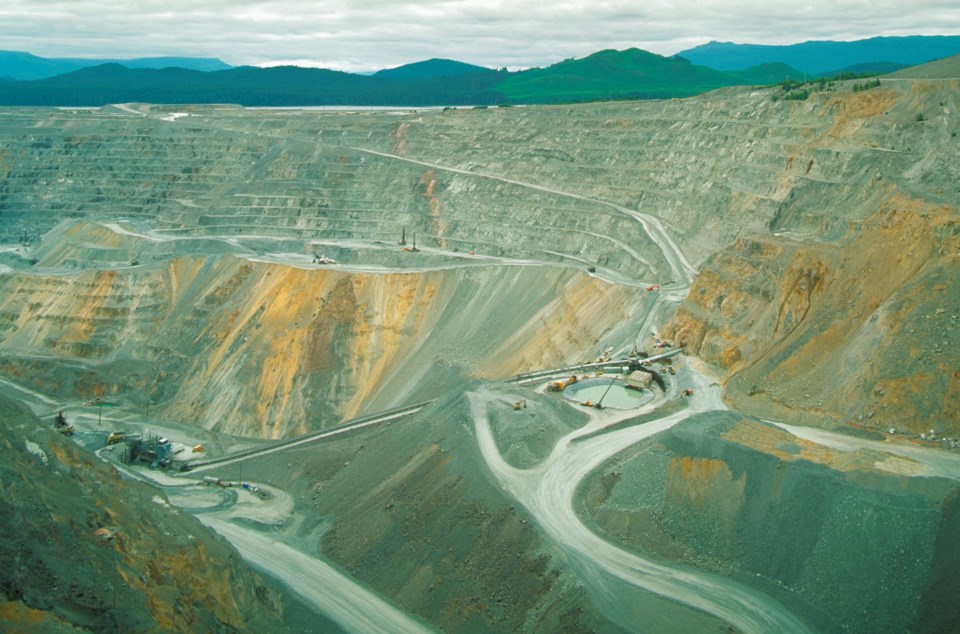Mining projects and protected land can co-exist, two provincial environment ministers said at a press conference on Friday after two days of meetings with their counterparts from across the country.
“We're all committed to climate action, we're all committed to the concept of sustainable development, and certainly, in all the provinces where appropriate, these things will coexist,” Tim Halman, environment minister of Nova Scotia, said.
Nova Scotia is now developing its critical mineral strategy, which will help the province unearth minerals like lithium, copper and chromite that are essential for battery production to support the electric vehicle industry and renewable energy.
Nathan Cullen, water, land and resource stewardship minister for B.C., gave the possibility of simultaneously developing mining projects and protected areas a “yes and yes.” He points to the Tahltan Nation in northern B.C., who are interested in both mining and ambitious conservation targets.
“Climate change response requires us to be able to effectively and sustainably have a mining industry in Canada to secure those minerals that go to the solutions we require,” he said.
Cullen notes traditional mining practices will need to change to make the industry sustainable, but he said B.C. is committed to ensuring biodiversity and mining exist in harmony. Mining is not allowed in national parks. It is also not permitted in B.C.’s provincial parks, but the province allows it in other protected areas.
The ministers’ meeting was the first in-person gathering since the United Nations’ COP15 biodiversity conference in Montreal last winter, which marked the signing of a landmark biodiversity agreement, similar to the 2015 Paris Agreement on climate. Signatories agreed on ambitious targets of protecting 30 per cent of the world’s oceans and lands by 2030.
There is still a question of how receptive the provinces are to protecting 30 per cent of Canada’s land and oceans. No province is obligated to meet the 30 per cent threshold; rather, Canada as a whole must reach that target, federal Environment Minister Steven Guilbeault said at the press conference.
It’s also still unclear what percentage of Canada’s protected land will be fair game for development as part of the federal government’s critical mineral strategy.
For example, Nova Scotia’s goal is to protect 20 per cent of its lands, whereas British Columbia has committed to a 30 per cent target for both lands and oceans. Some provinces doing more and others doing what they can is how Canada will reach its target, Guilbeault said.
It’s an ambitious plan given the country has fewer than seven years to double its number of protected areas to reach the 2030 goal. Currently, almost 14 per cent of Canada’s land and nearly 15 per cent of marine areas are under some form of protection.
About half of Canada’s environment ministers skipped the meeting on biodiversity loss, including representatives from Ontario and Alberta, two of the country’s largest provinces. It’s still unclear how much land Ontario and Alberta are willing to protect and conserve.
Indigenous rights played a central role in the COP15 agreement, though there’s still a question about how protections for land and water defenders will manifest in Canada. A federal policy paper shows the government aims to “ensure the full protection of environmental human rights defenders by 2030.”
So far, that goal remains incomplete. The Community-Industry Response Group (C-IRG) — a B.C. unit of the RCMP responsible for policing “large-scale resource-based industrial projects” — has faced scrutiny over its surveillance and response to old-growth logging protests in Fairy Creek and land defenders on Wet’suwet’en territory opposing the construction of the Coastal GasLink pipeline. The unit came under an investigation by the Civilian Review and Complaints Commission, an independent watchdog, in March.
Neither Guilbeault nor Cullen, the B.C. minister of water, land and resource stewardship, commented on how the C-IRG might be affected by Canada’s obligations to the COP15 biodiversity agreement.
— With files from The Canadian Press



